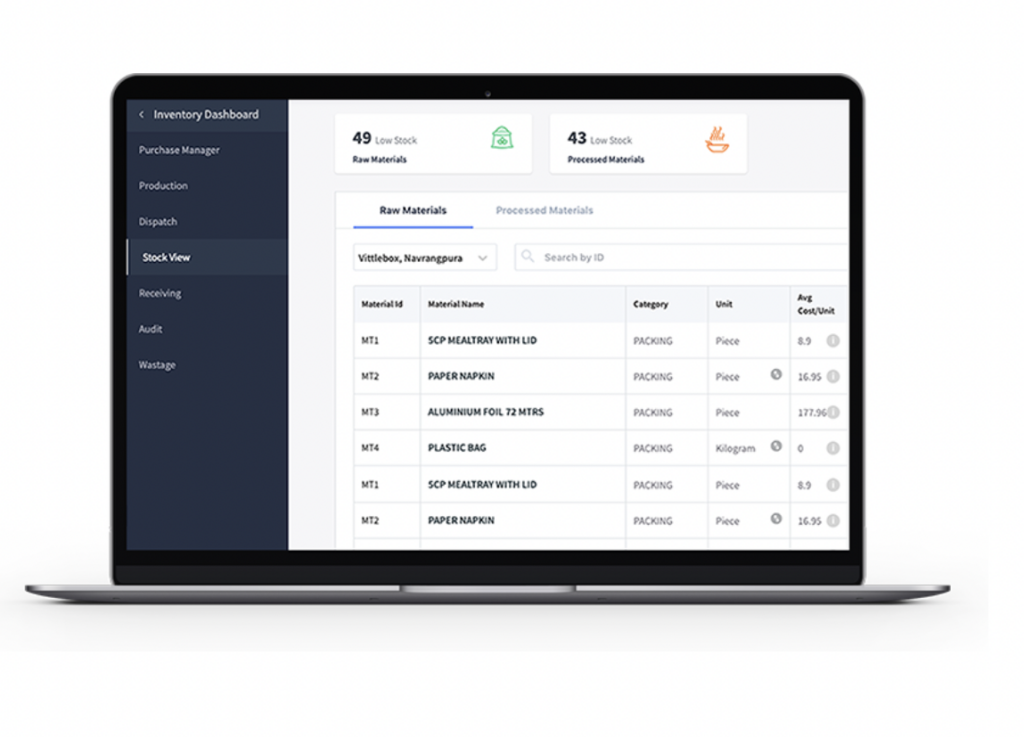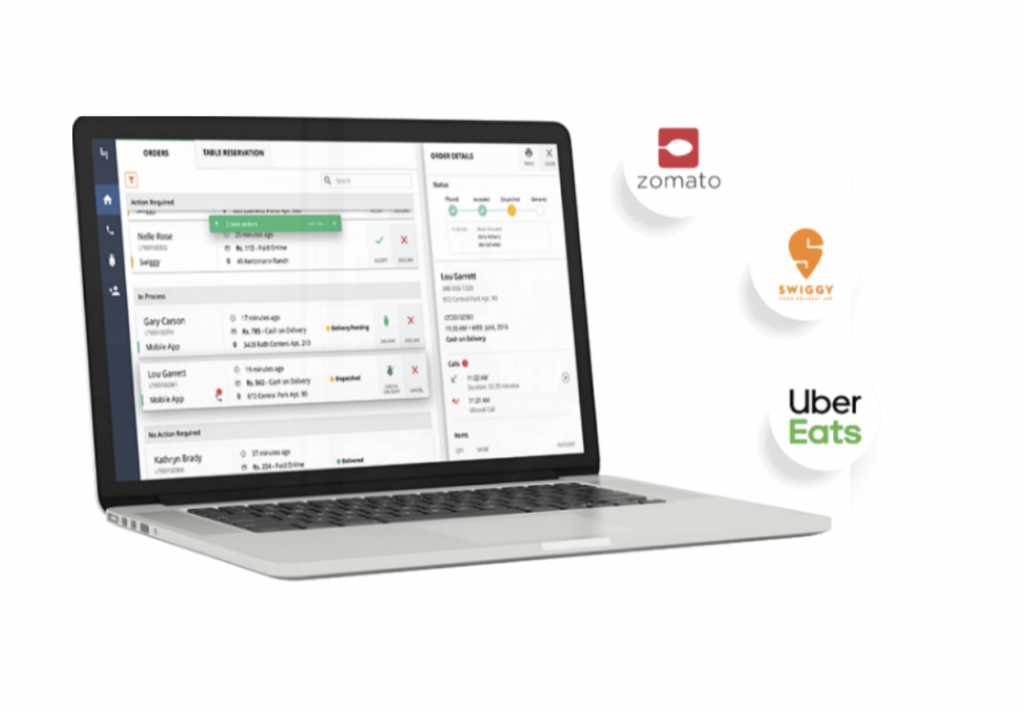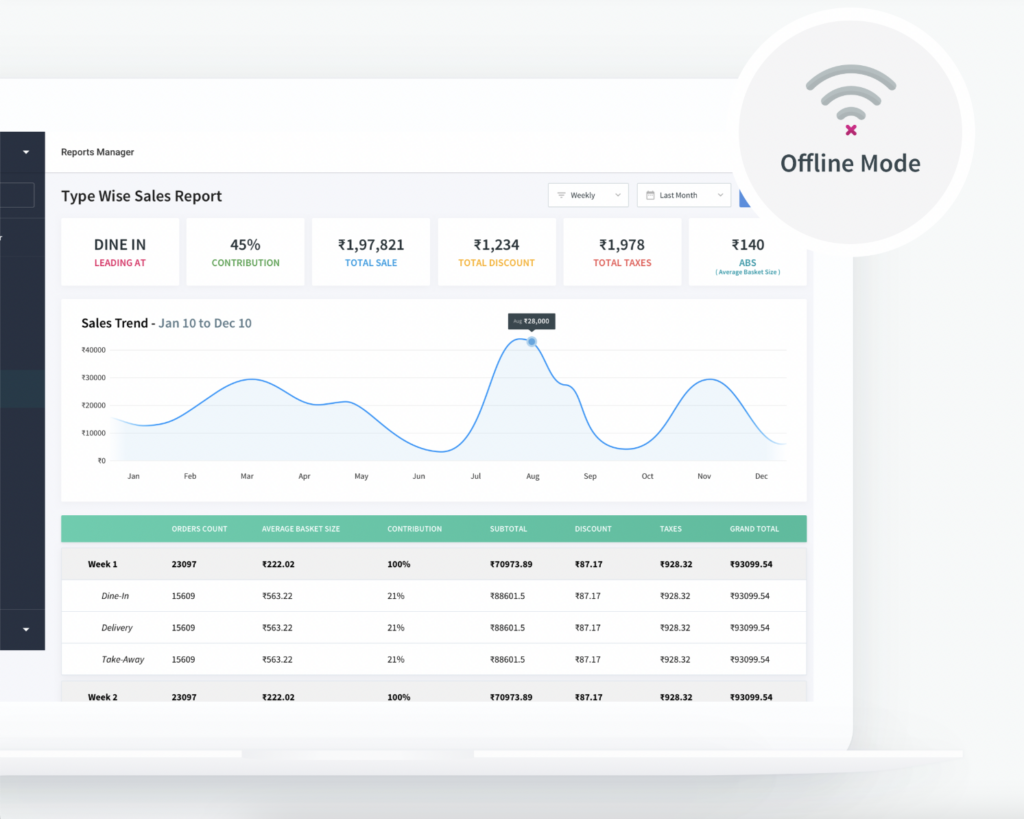Running a quick-service restaurant (QSR) in a bustling food court isn’t for the faint-hearted. You’ve got crowds, endless orders, and the constant hum of competition, all while trying to keep customer service upbeat.
So, how do successful QSRs keep up with the chaos? The secret weapon is a well-chosen food court POS system.
With features like quick order processing, integrated payment systems, and inventory tracking, this system helps improve operations and minimize errors. This guarantees that your customers have a good experience, even during the busiest rush hours.
The following article explores the hardware and software components of a food court POS system, its benefits, and step-by-step guidance on implementing it effectively.
What is a Food Court POS System?
Imagine your food court POS system as the behind-the-scenes magician that keeps your QSR running like a well-oiled machine. It’s a combination of hardware and software designed specifically for quick-service dining environments.
Think order processing, payment collection, inventory tracking, and customer management—all integrated into one powerful system.
Why does it matter? Because food courts are chaos personified. From long queues to customers expecting lightning-fast service, you can’t afford to rely on outdated methods. A functional food court POS system ensures that your operations are smooth and customer-friendly.
Now that we know what a food court POS system is, let’s dive deeper into the hardware and software components that make up these systems.
Hardware and Software Components of Restaurants POS Systems
A food court POS system is more than just a sleek touchscreen; it’s a powerful hub that integrates multiple tools to improve operations. It helps manage orders, payments, and inventory, leading to smooth customer service.
Here are the essential hardware components that make it all possible:
- Touchscreen Terminals: The central hub for all operations, making order-taking and payment processing a breeze.
- Receipt Printers: Fast, efficient, and essential for providing customers with their order summaries.
- Cash Drawers: Yes, cash is still king in many food courts!
- Barcode Scanners: Perfect for inventory management or combo meal promotions.
- Kitchen Display Systems (KDS): Directs orders from the counter straight to the kitchen, eliminating the need for manual communication.
Our Kitchen Display System (KDS) optimizes order flow and reduces errors by sending orders directly from the POS to the kitchen.
With instant updates and easy-to-read screens, this system helps your kitchen team stay on top of orders, reduce delays, and improve service speed. Wondering how it works? Read here!
Software Components:
- Order Management: Keeps track of all customer orders and makes sure nothing slips through the cracks.
- Inventory Tracking: Monitors stock levels and sends alerts for low inventory.
- Customer Relationship Management (CRM): Helps track loyal customers and implement reward programs.
- Analytics Tools: Provides insights into sales trends, peak hours, and bestselling menu items.
- Payment Processing: Ensures multi-payment options, including cash, card, and digital wallets.
With the right hardware and software combo, your POS system becomes the ultimate multitasking genius.
Now that you’re familiar with the components, let’s look at the many benefits a food court POS system brings to the table.
5 Benefits of Food Court POS Systems
Let’s cut to the chase—what’s in it for you? From improving functionality to upgrading customer service, food court POS systems offer practical solutions. Here’s how these solutions transform your QSR operations.
- Lightning-Fast Service
In a food court, speed is everything. A food court POS system reduces the time it takes to process orders and payments, resulting in shorter queues and happier customers.
Ever lost a customer because the line was too long? With order processing and kitchen displays, your POS system keeps the line moving fast, no matter how busy it gets.
- Accurate Order Management
Gone are the days of scribbling orders and hoping for the best. A food court POS system sends order details directly to your kitchen staff, promising accuracy every time. No more miscommunications, just smooth service!
- Inventory Control Like Never Before
How many times have you run out of fries during peak hours? A food court POS system tracks stock levels at all times, helping you restock before you hit a crisis.
Ready to take control of your inventory? LimeTray’s QSR POS system makes it easy to track stock levels, manage orders, and manage restocking, all from one intuitive platform.
As reflected in the snapshot below, it offers features like automated alerts and detailed reporting, so that you’re always prepared, even during the busiest rush hours!

- Higher Revenue with Upselling Opportunities
POS systems are more than just order takers—they’re revenue boosters! A food court POS system can suggest add-ons or combos during the ordering process.
“Would you like to add a drink for just $2 more?” With a simple prompt, you’re upselling without lifting a finger.
- Data-Driven Decision-Making
From identifying bestselling items to identifying your least active hours, a food court POS system’s built-in analytics provide insights that help you make smarter decisions. Know what’s working, and what isn’t, at a glance.
It’s one thing to talk about the benefits, but it’s another to see the success in action. Take Shangz, for example. In just a year, they grew from a small QSR to a multi-outlet brand for authentic Chinese cuisine, turning to LimeTray to improve productivity.
Watch the full story here.

However, before you implement these systems, it’s important to know the steps involved in setting them up.
5 Steps to Implement Food Court POS Systems
Thinking about adopting a food court POS system? Here’s how to implement it smoothly, without the stress.
Step 1: Assess Your Needs
Before diving in, understand what your QSR needs most. Are you focused on improving order accuracy or diving into detailed analytics? A clear idea of priorities will guide your choice of a food court POS system.
Step 2: Choose the Right POS Provider
Not all POS systems are created equal, especially for food courts. Look for a provider who understands your specific challenges. A good provider will offer a POS system demo to help you make an informed decision.
Step 3: Install and Test the System
Once you’ve chosen your system, make sure it’s properly installed and thoroughly tested before going live. Training your staff on how to use the new food court POS system effectively is also key to a smooth transition.
Step 4: Integrate with Other Tools
A POS system that doesn’t work well with your existing tools can cause more headaches than help. Make sure that your food court POS system integrates with payment gateways, kitchen displays, and other vital systems.
The last thing you want is a system that complicates things.
That’s where LimeTray’s integration capabilities come in. You can integrate with a variety of platforms, from payment systems to delivery services like Zomato, Swiggy, and UberEats, as shown in the visual below.

Step 5: Monitor and Optimize
After installation, keep an eye on how your food court POS system is performing. Use analytics to track its impact and optimize settings based on real-world data to get the most out of your system.
Following these five steps will help you implement a food court POS system that’s not just functional, but also a powerful tool for your business.
However, even with a solid implementation plan, you’ll encounter challenges along the way. Let’s explore some of the common hurdles and how innovations are helping overcome them.
5 Challenges and Innovations in Food Court POS Systems
Running a food court is no easy feat. There’s always a crowd, constant orders, and the pressure to keep everything moving smoothly. But when your food court POS system works well, it’s a game-changer.
Of course, no system is perfect, and there are challenges that come with the territory. Let’s take a closer look at some of the most common ones and how new tech innovations are stepping in to help.
Challenge 1: System Downtime
Imagine your food court POS system crashing in the middle of a lunch rush! It’s a nightmare for any business. Thankfully, cloud-based systems with offline modes are here to save the day.
Even if the internet goes down, your operations can keep humming along without missing a beat.
So, don’t let connectivity issues hold you back! LimeTray’s analytics tool offers powerful insights with offline capabilities, so you never lose track of your business performance.
With its live data on sales trends, customer preferences, and inventory, you can optimize operations anytime, anywhere, as highlighted in the image below.

Challenge 2: Data Security
Handling customer payments means protecting sensitive information. A security breach can damage your reputation beyond repair.
Fortunately, newer food court POS systems use advanced encryption and tokenization, so that customer data remains secure, even in high-risk situations.
Challenge 3: High Initial Costs
For small QSRs, the upfront cost of a new POS system can feel overwhelming. The good news? Modern food court POS systems now come with subscription-based models and affordable hardware options, making them accessible to businesses of all sizes.
Challenge 4: Keeping Up with Trends
Customers are demanding digital wallets, loyalty apps, and online ordering. Keeping up with these trends can feel like a constant race.
But with the right food court POS system, you can easily integrate third-party apps, so your business stays on the cutting edge.
Challenge 5: Staff Training
Introducing a new system to your team can be overwhelming, especially when they’re already juggling busy shifts.
But don’t worry—today’s food court POS systems feature intuitive interfaces and on-demand training modules that make the learning curve much easier to navigate.
With the right innovations, these challenges become a lot more manageable, making your food court POS system the ultimate tool for success!
Wrapping Up
Food court POS systems aren’t just tools—they’re lifelines for any QSR aiming to survive and thrive in a competitive market. These systems help reduce wait times and certify accuracy, all of which lead to better customer satisfaction.
Data-driven insights, inventory tracking, and upselling capabilities make a food court POS system an effective tool for increasing sales.
The right POS system can truly redefine your restaurant’s workflow and improve profitability, giving you a competitive edge that’s hard to beat.
So, are you ready to transform your food court business?
Explore LimeTray QSR POS system today and see the difference it can make. With fast order processing, payment solutions, and sales analytics, LimeTray transforms challenges into opportunities.



